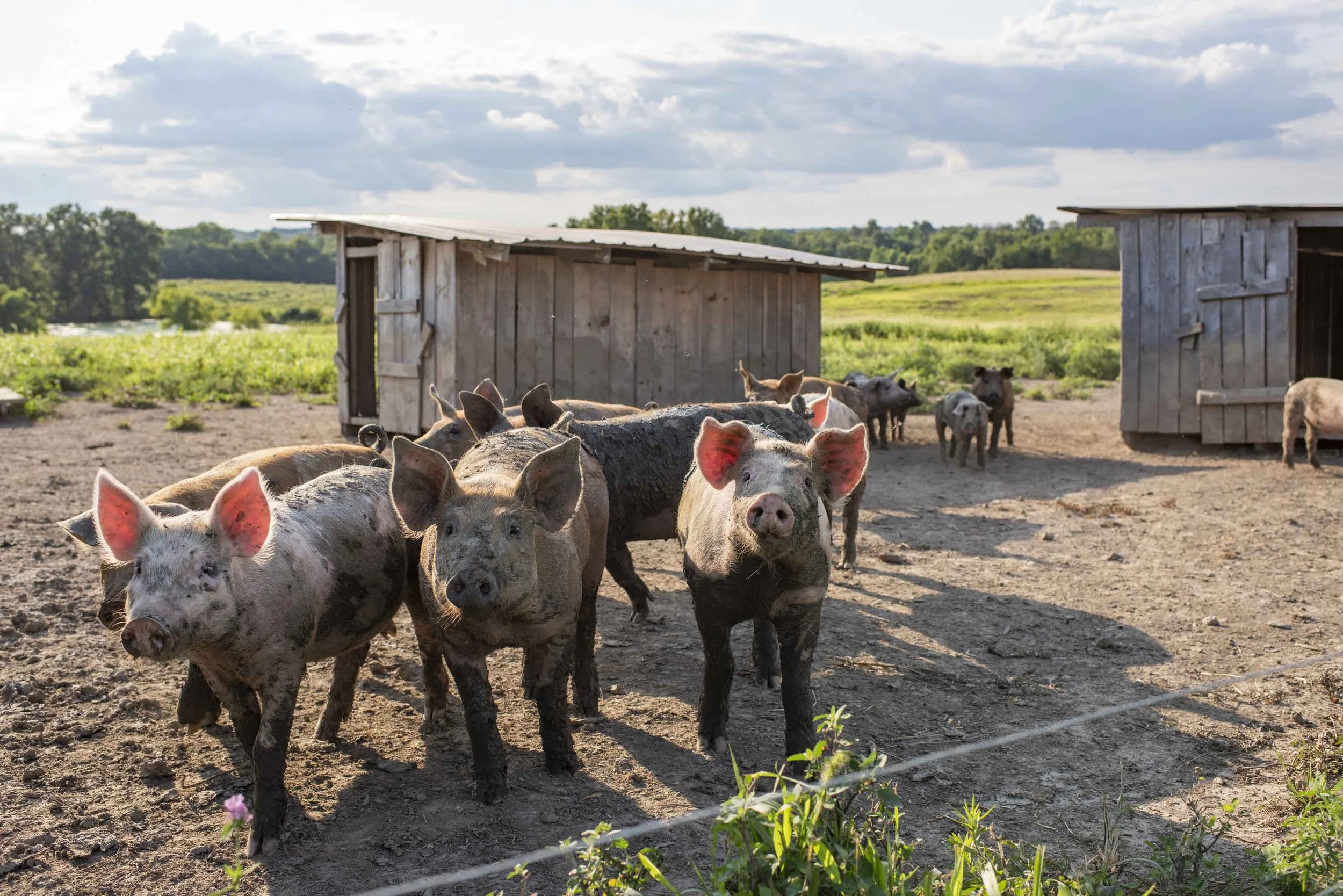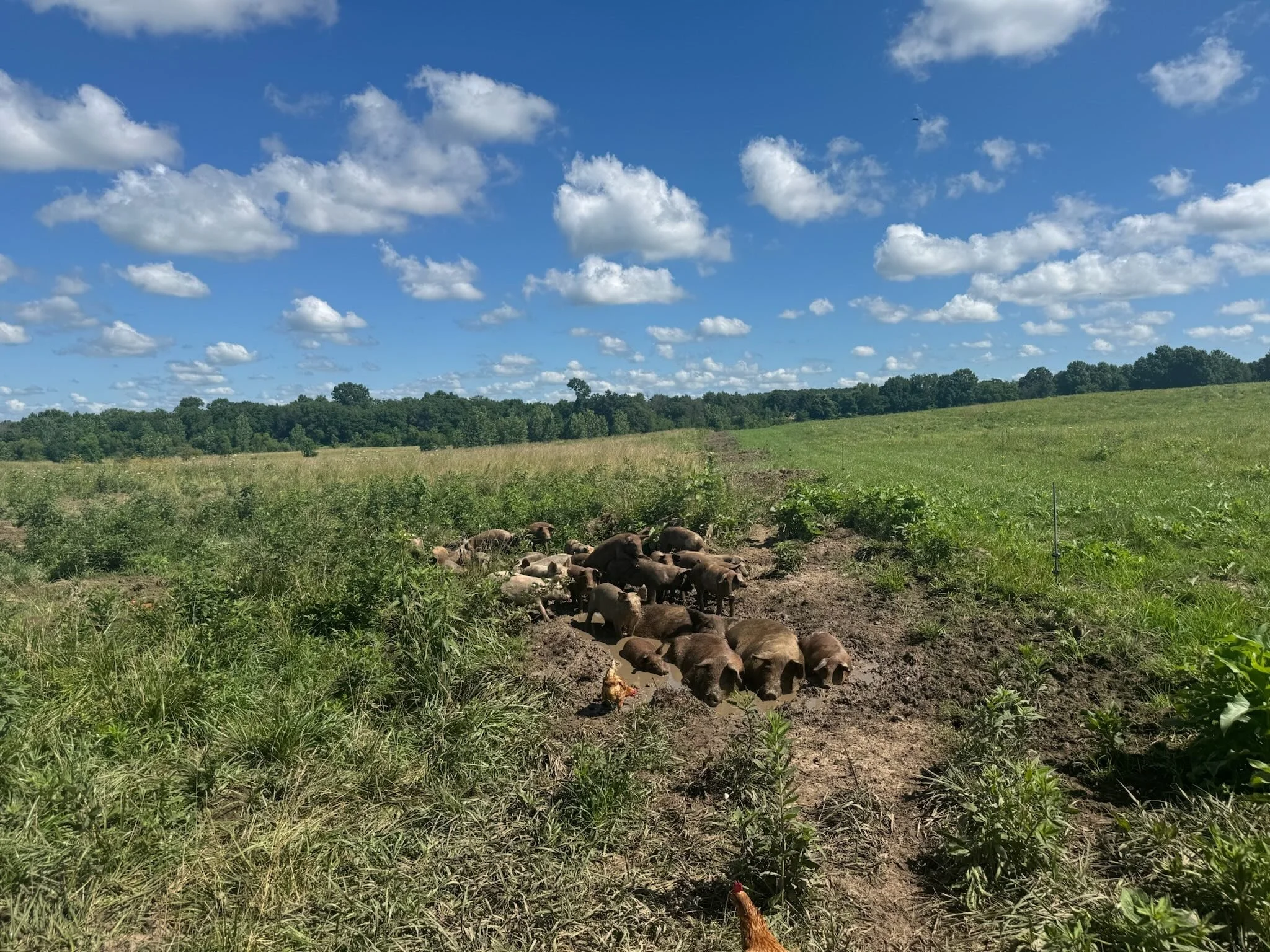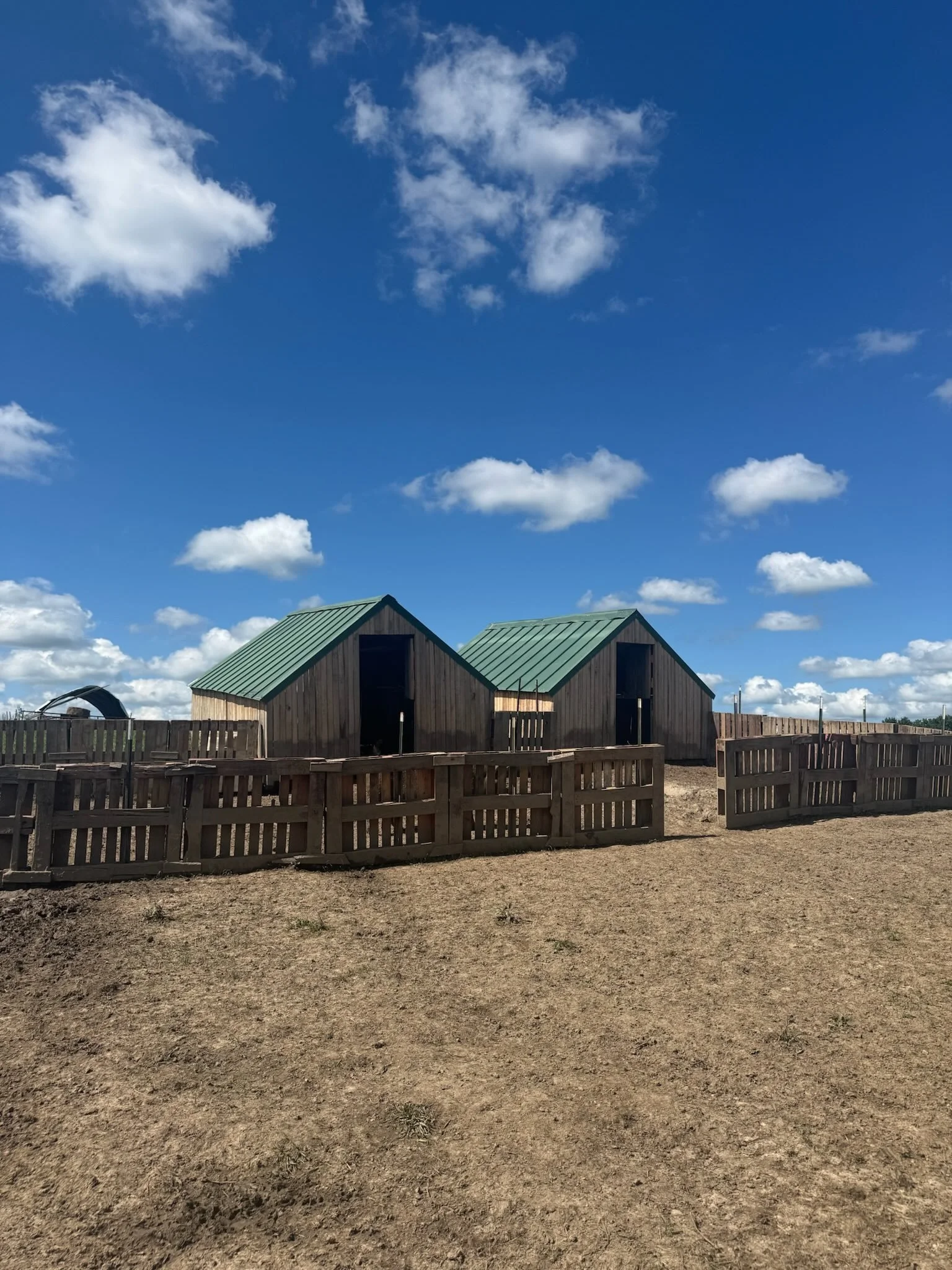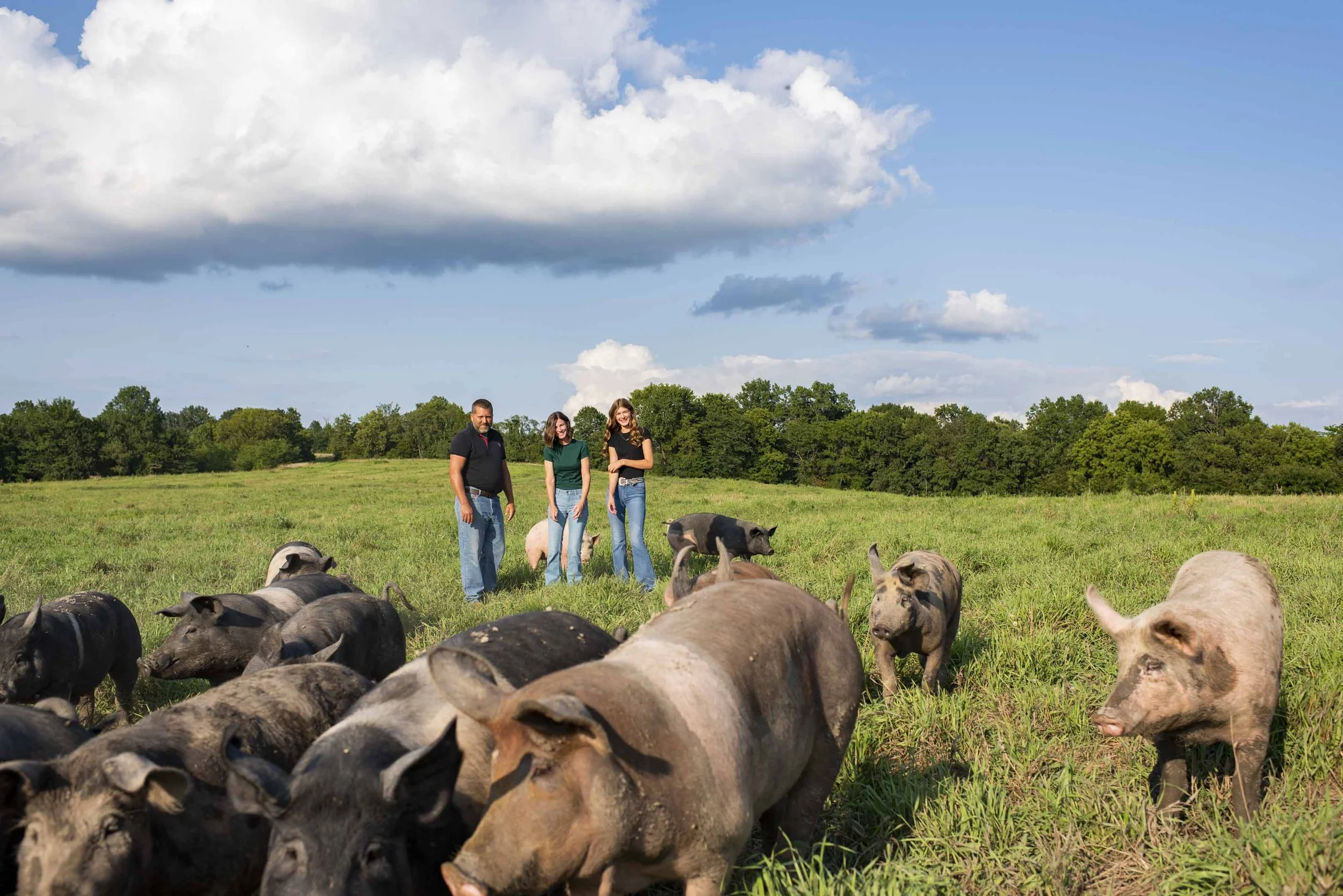How Our Pigs Are Raised — And Why It Matters!
Good food starts with how it’s grown!
At our farm, raising pigs isn’t just a business — it’s a way of life. One that’s rooted in care, intention, and the belief that the best food starts with the best practices. If you’ve ever wondered what it really means for pork to be pasture-raised, or what goes into creating pork that’s tender, flavorful, and raised with integrity — you’re in the right place.
Here’s a closer look at how we raise our pigs, and why it makes all the difference in the final product.
A Day in the Life of Our Pigs
Our pigs spend their days doing what pigs love best: roaming the pasture, rooting in the soil, and living the good life outdoors. In the cool mornings and early evenings, you’ll find them out exploring, the way pigs should be — snuffling around for tasty treats in the grass and soaking up the sunshine. When the heat rolls in, they head for the shade, the wallow, or their cozy house for a mid-day cool-off.
They eat when they please, thanks to free-choice feeding and automatic waterers. And every day, they get a special treat: a helping of organic milk. That might sound fancy but there’s a reason for it — more on that below.
What “Pasture-Raised” Really Means
You’ve probably seen the term pasture-raised on meat labels, but what does that really look like in practice?
For us, it means giving our pigs space to roam, fresh air, and an environment that lets pigs be pigs. Our animals live outside on pasture, not in confinement barns. They have room to move, root, explore, and relax. We believe animals raised with fresh air and sunshine grow up healthier — and happier.
Pigs being pigs — wallowing in mud out on the pasture.
Why We Choose Organic, Non-GMO Feed
Pigs have sensitive stomachs, and what they eat plays a huge role in their overall health — just like it does for us humans. That’s why we feed our pigs organic, non-GMO feed.
It’s not the easiest or cheapest route, but it’s the one that aligns with our values. Healthy feed means healthy pigs — and, ultimately, healthier meat. We care deeply about what goes on your plate, and it all starts with what goes into our animals.
The Secret Ingredient: Milk!
One unique thing we do here is feed our pigs organic milk every day. This practice is more common in European pork farming — and we’re big fans of the results. The milk helps marbelize the fat in the meat, creating pork that’s tender, richly flavorful, and unlike anything you’ll find in the grocery store.
If you’ve ever tasted our pork and thought, “Wow, this is different,” that’s why!
Raised with Care — Down to the Details
We go to great lengths to make sure our pigs are treated with care and respect. It’s not just about open pastures and healthy feed — it’s also about thoughtful, hands-on attention.
For example, Farmer Bill recently built brand new pig houses. He carefully rounded every corner, smoothing down any sharp edges by hand to make sure the pigs would be safe and comfortable. That kind of attention isn’t standard for all pork farms, but it’s how we do things here.
Farmer Bill working on the new houses
The new houses — more spacious and comfortable for the pigs
Why It All Matters
At the end of the day, the way animals are raised does matter. It impacts the quality of the meat, the health of the animal, and the ethics of the entire food system.
When you buy our pork, you’re not just getting delicious, richly flavored meat — you’re supporting a way of farming that’s rooted in care, sustainability, and respect for animals.
We believe in raising pigs right, and we believe you can taste the difference!
Ready to try it for yourself?
We sell whole and half hogs directly to customers — perfect for stocking your freezer with high-quality, pasture-raised pork you can feel good about.
–> Learn more about buying a whole or half hog here: What to Expect When You Buy a Whole or Half Hog
Questions? Curious about the process? We’re always happy to chat. Just reach out — we’d love to hear from you!





